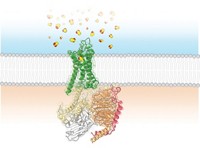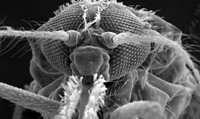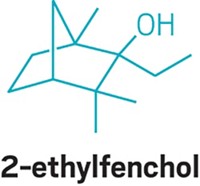Advertisement
Grab your lab coat. Let's get started
Welcome!
Welcome!
Create an account below to get 6 C&EN articles per month, receive newsletters and more - all free.
It seems this is your first time logging in online. Please enter the following information to continue.
As an ACS member you automatically get access to this site. All we need is few more details to create your reading experience.
Not you? Sign in with a different account.
Not you? Sign in with a different account.
ERROR 1
ERROR 1
ERROR 2
ERROR 2
ERROR 2
ERROR 2
ERROR 2
Password and Confirm password must match.
If you have an ACS member number, please enter it here so we can link this account to your membership. (optional)
ERROR 2
ACS values your privacy. By submitting your information, you are gaining access to C&EN and subscribing to our weekly newsletter. We use the information you provide to make your reading experience better, and we will never sell your data to third party members.
Biochemistry
Chemists propose unifying theory of musk
Engineered olfactory receptor may explain why structurally diverse molecules smell similar
by Laurel Oldach
November 15, 2022

The human brain registers at least four classes of compounds as the scent we call musk. Structurally, these compounds look nothing alike, yet they smell the same: gamy, rich, and leathery.
Researchers at Duke University and Kao Corporation, a chemical and consumer products company in Tokyo, now report that the four types of molecules all activate one olfactory receptor. The team also used the structures of the molecules that activate the receptor to predict other musk-scented molecules (Curr. Biol. 2022, DOI: 10.1016/j.cub.2022.10.038).
“Musks are some of the most profitable chemicals in the perfume industry,” says Joel D. Mainland, an olfaction researcher at the Monell Chemical Senses Center who was not involved in the study. The chemicals are used in soaps, detergents, and even cat litter. However, some of them bioaccumulate and may pose a risk of cancer, prompting a hunt for alternatives.
“We are trying to develop perfumes for consumer products in an environmentally and human health–friendly manner by pinpointing important odorant receptors for a given odor type,” says Keiichi Yoshikawa, a biologist at Kao and the paper’s corresponding author, in an email.
Finding the receptor responsible for a scent is challenging. The three receptors known to recognize musk compounds only respond to a subset of musk-scented compounds. Humans have roughly 400 known other odorant receptors, but because they are difficult to express and test in cultured cells, few have been matched to ligands.
The scientists worked around this problem using a technique for protein engineering recently developed in coauthor Hiro Matsunami’s lab at Duke University (Proc. Natl. Acad. Sci. U.S.A. 2019, DOI: 10.1073/pnas.1804106115). The researchers compared the amino acid sequences for a given odorant receptor across 112 mammal species to determine the most common amino acid at each position and made a receptor with this so-called consensus sequence. Matsunami’s lab has found that consensus proteins are often easier to express and test.
The team repeated this for five receptor proteins that genetic studies had linked to human musk perception and expressed each of them in cells engineered to produce light when the odorant receptor is activated. Then the researchers tested the ability of 48 compounds to activate each of receptors. The scientists found that the consensus protein derived from the odorant receptor OR5A2 bound to all the musk molecules and none of the structurally similar nonmusky controls. The engineered protein differs from human OR5A2 at 25 of its 324 amino acids, which might affect how it binds to odor compounds. Matsunami says the engineered receptor likely mimics the human protein, however, because the molecules that bind it are known to smell musky.
Using the structures of compounds that do and do not activate the receptor, the researchers developed a machine learning model and used it to screen a database of odorant structures and human perceptions. The model, Mainland says, claims to identify known musk molecules much better than prior models trained only using the database. Although they do not report any new musky compounds in the study, the authors say that the Kao Corporation has filed patents related to the work.





Join the conversation
Contact the reporter
Submit a Letter to the Editor for publication
Engage with us on Twitter